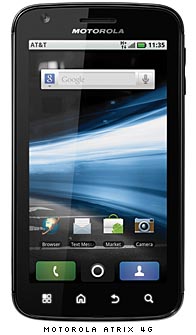
In the alphabet soup of telecom acronyms, 4G (for “fourth generation”) seems like one everyone should be able to agree on. Unfortunately it’s turning into a vague and ill-defined marketing term.
The “generations” in cellular standards refer to dramatic shifts in mobile technology infrastructure that are generally not backwards-compatible, use new frequency bands, have significantly increased data rates, and have occurred in roughly 10-year increments. First-generation mobile networks were the original analog cellular technology deployed in the early ’80s, second-generation refers to the transition to digital networks in the early ’90s, and third-generation was the circa-2001 shift to spread-spectrum transmission that was considered viable for multimedia applications.
So far so good, but the leap to fourth generation is getting confusing. The International Telecommunication Union Radiocommunication sector (ITU-R) is the body that manages and develops standards for radio-frequency spectrum, and as such is the most official arbiter of concepts like “4G.” But the ITU can’t make up its mind.
Originally the ITU-R defined 4G as technologies that could support downstream data rates of 100 Mbps in high-mobility situations and 1 Gbps in limited mobility scenarios. The next versions of both LTE and WiMax networks (LTE-Advanced and WirelessMAN-Advanced/802.16m) promise these kinds of speeds, but neither is expected to be available commercially until 2014 at the earliest. However “4G” has been widely used by vendors to label other technologies that don’t meet the ITU-R definition, including the original versions of LTE and WiMax, and that’s where things start getting messy.
Apparently bowing to pressure from carriers on this topic, the ITU-R issued a statement last December backing down from the requirements of its original definition of 4G. Stephen Lawson wrote in Network World that the original ITU-R definition caused chaos by stepping on the vendors who had been already using the term:
After setting off a marketing free-for-all by effectively declaring that only future versions of LTE and WiMax will be 4G, the International Telecommunication Union appears to have opened its doors and let the party come inside.
 Where 2.0: 2011, being held April 19-21 in Santa Clara, Calif., will explore the intersection of location technologies and trends in software development, business strategies, and marketing.
Where 2.0: 2011, being held April 19-21 in Santa Clara, Calif., will explore the intersection of location technologies and trends in software development, business strategies, and marketing.
But loosening the definition of what can be called 4G hasn’t pleased everyone and has added to the sense of confusion over what the term really means. Besides being used for what many consider 3G technologies like LTE and WiMax, T-Mobile has also been referring to its HSPA+ technology, which can support up to 42 Mbps downstream, as 4G.
Sascha Segan writes that he wishes there were some “4G police” to enforce the matter in a scathing PCMag article about AT&T’s slippery usage of the term. PCMag recently tested some of AT&T’s supposedly 4G devices and found them underperforming their 3G counterparts.
AT&T has reached a new low, though, by delivering “4G” devices that are actually slower than the carrier’s own 3G devices. Yes, you read it correctly: for AT&T, 4G is a step backwards … AT&T recently confirmed it is crippling the upload speeds on its two 4G phones, the Motorola Atrix and HTC Inspire.
AT&T has responded that they’re still in testing mode on these higher-bandwidth capabilities and will be enabling advanced features at some point in the future. But they don’t seem to have any issue calling them “4G” today. Not all of their customers are happy about this. Zack Nebbaki has launched an online petition that has more than 900 signatures, asking AT&T to explain (and presumably stop) the bandwidth-capping they appear to be doing to the Motorola Atrix 4G phones.
Bandwidth-capping seems to becoming more widespread. Clearwire is currently being sued for throttling the download speeds of its WiMax offering while advertising “no limits on data usage.” (And the trend isn’t just restricted to mobile networks, AT&T recently announced that it will institute data-capping for its DSL and U-Verse services.)
Regardless of the terms the industry uses (or abuses) or whatever bandwidth-limiting practices are put in place, it’s the users’ perceptions that will determine the success of these future technologies. That’s what at least one mobile carrier says it’s focusing on. When asked by Network World about the controversy around their use of the term 4G, T-Mobile’s senior director of engineering Mark McDiarmid said, “For us, 4G is really about the consumer experience.”
